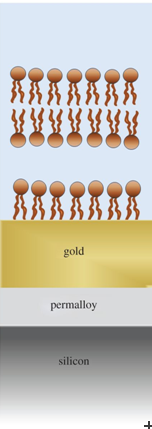Copyright 2012 neutronsources.org | All rights reserved. | Powered by FRM II | Imprint / Privacy Policy
Biosensors will benefit from new method to produce membranes
NMI3 collaboration has taken a significant step in the production of biological membranes.
By Inês Crespo, Information Manager, 01/12/2014
All cells in our body are surrounded by membranes, usually a phospholipid bilayer. It is thus important to study biological membranes as they can be used for instance to investigate new sensor technologies that could support the delivery of medicines to our body or to diagnose diseases.
To make them easier to study scientists are working on new ways to immobilise membranes on solid substrates. They use floating supported bilayers (FSBs) as these do not interact with the substrate. However FSBs can be unstable and little dense, making them difficult to immobilise. Thanks to the NMI3 Joint Research Activity on Tools for Soft and Bio-Materials, a group of scientists have proposed a new approach to produce FSBs so that the situation can finally be improved.
By using gold and magnetic layers to enhance their neutron reflectivity experiments, they made great progress in producing a lipid bilayer. The first layer (SAM ‒ a self-assembled monolayer) was completely formed whereas the second layer was a stable FSB that covered the first layer almost completely.
This new approach is a significant step forward on the fabrication of FSBs as it is simple, stable and able to create complete layers. These findings might open new doors in the field of medicine.
Original publication
Hughes AV, Holt SA, Daulton E, Soliakov A, Charlton TR, Roser SJ, Lakey JH (2014), High coverage fluid-phase floating lipid bilayers supported by ω-thiolipid self-assembled monolayers, J R Soc Interface, 11(98):20140447. DOI: 10.1098/rsif.2014.0447.
This work was supported by the NMI3 Joint Research Activity on Tools for Soft and Bio-Materials.
Thanks to A.V. Hughes for reviewing this article.
